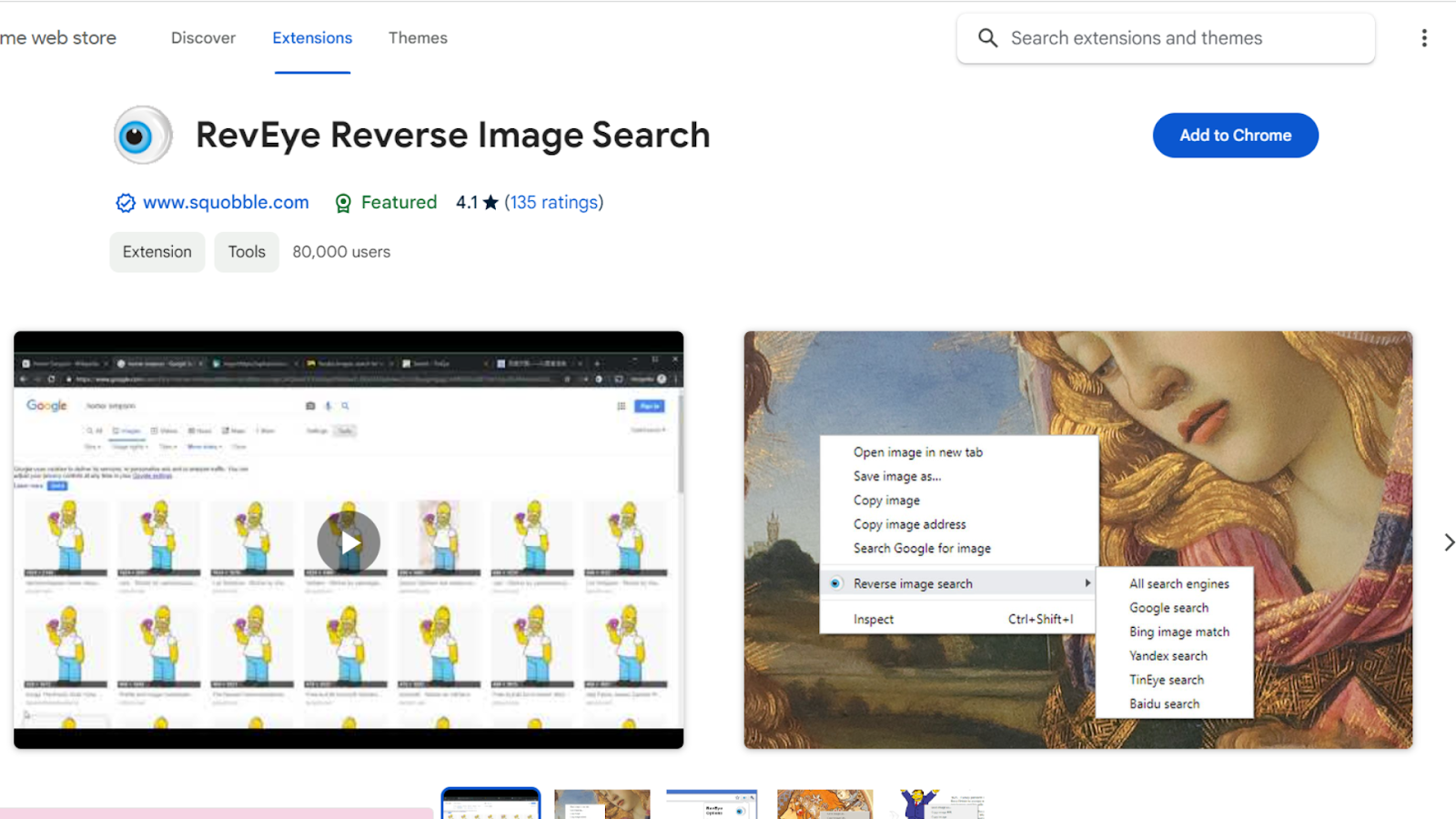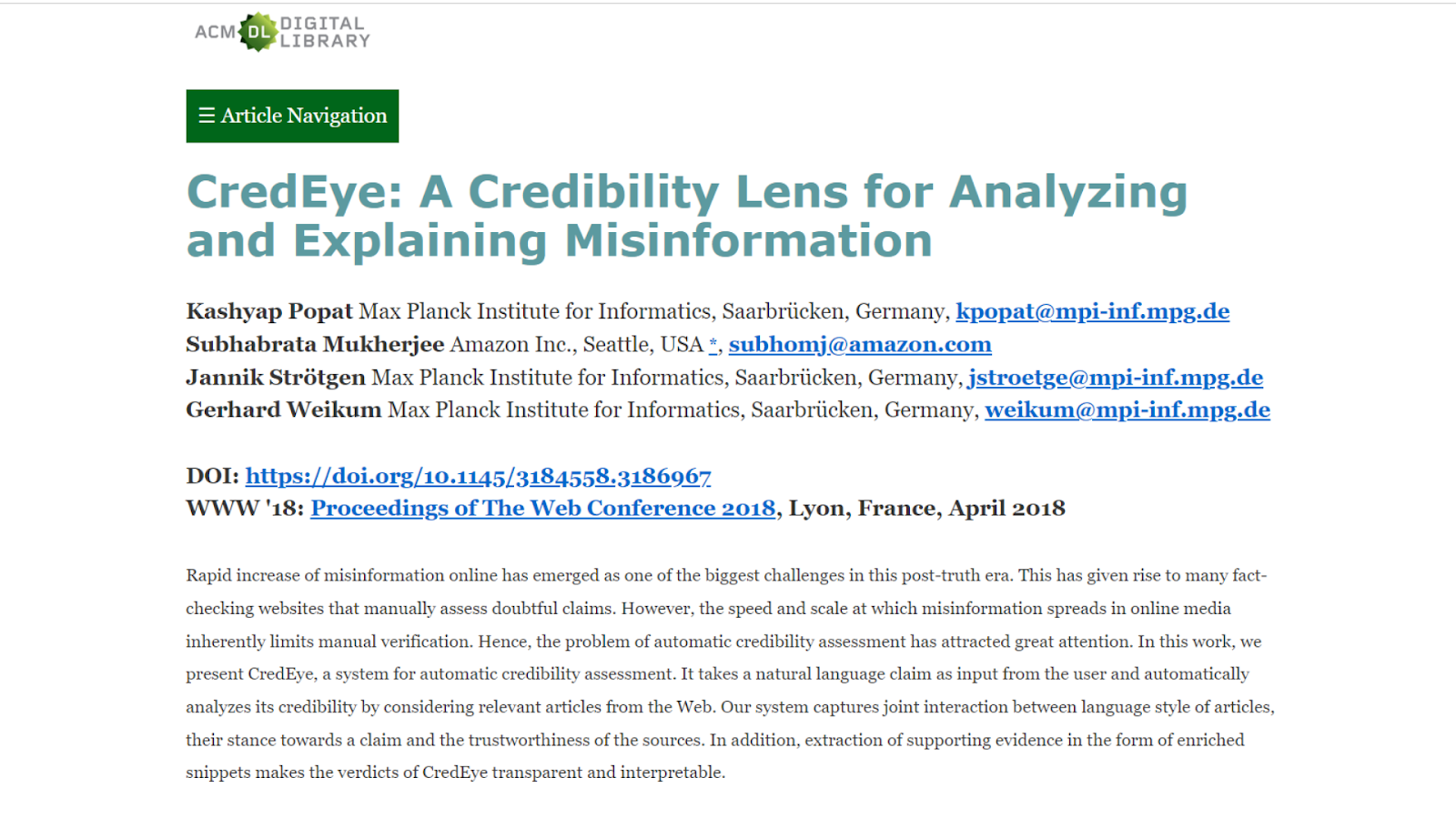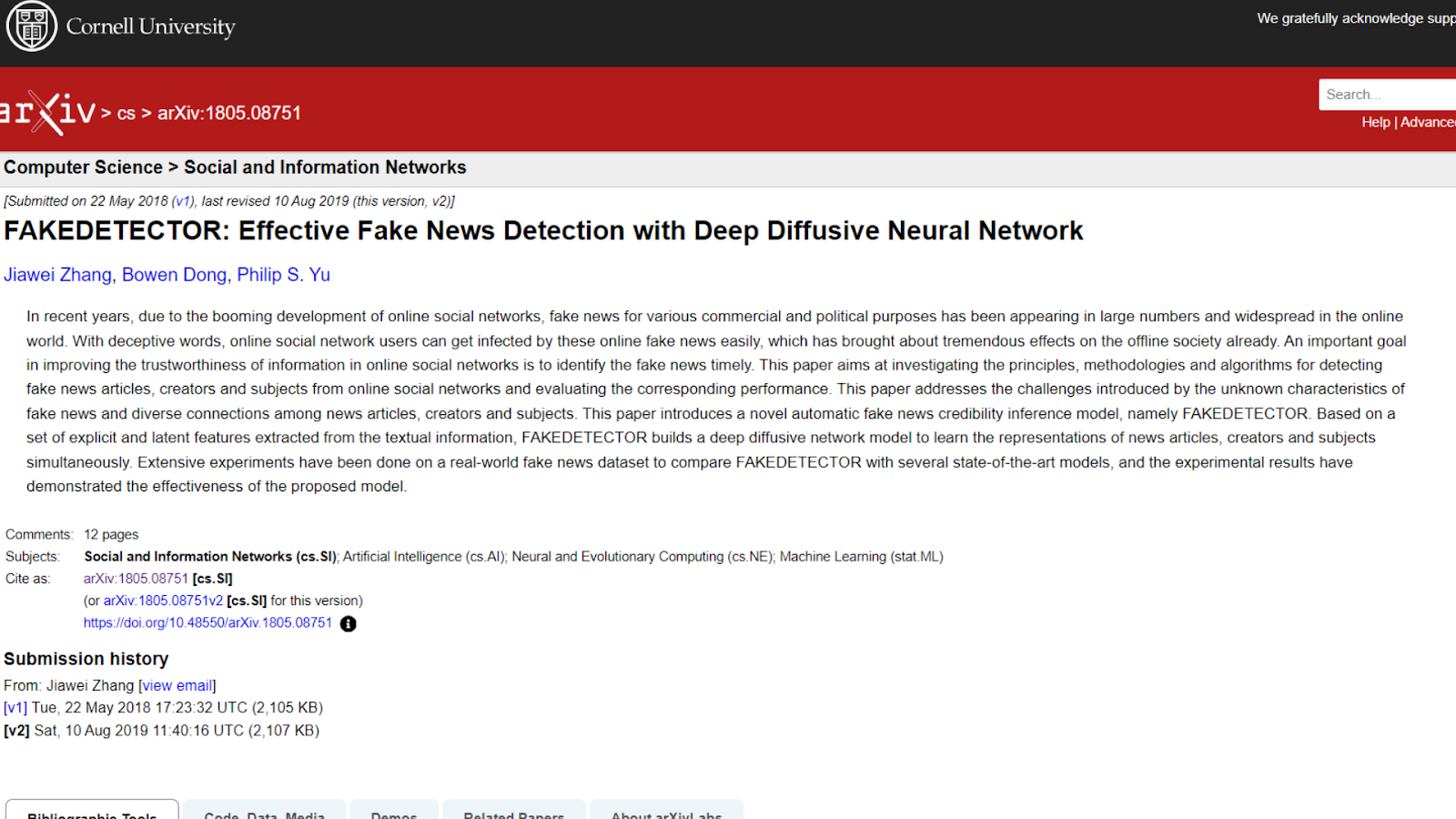Artificial Intelligence systems are being created to aid in identifying and responding to false information distributed on the internet. AI tools for Disinformation Detection can examine large amounts of data to spot coordinated efforts to spread misinformation. Other AI technologies can detect altered media such as deepfakes. Some instruments evaluate the trustworthiness of news and sources.
AI tools for Disinformation Detection can also assist with confirming claims. While AI disinformation detection shows promise, it has limits. More progress is required for AI to become fully dependable at spotting and combating misleading or false information online. Overall, as the technology progresses, AI tools for disinformation detection have the potential to help combat online disinformation.

In this list, we’ll explore the 10 Best AI Tools for Disinformation Detection that are helping the masses to fight disinformation:
1. RevEye
RevEye is an AI tool for disinformation detection that analyzes web pages and social media posts to detect manipulated pictures, edited films, and misleading headlines. It makes use of PC imaginative and prescient and herbal language processing to become aware of inconsistencies and anomalies that may imply altered or fabricated content.
RevEye highlights suspicious areas at once on pages and offers a distinct analysis of why it believes positive content can be fake.

Features:
- Detects manipulated pictures and motion pictures through the use of superior AI strategies. Provides an evaluation of the chance of manipulation.
- Integrates with social media structures to mechanically flag fake content material.
Pros:
- Efficient image analysis for authenticity.
- The user-friendly interface allows for brief verification.
Cons:
- Limited scope for detecting superior manipulation.
- Dependency on visual cues may additionally result in false positives.
Link: https://chromewebstore.google.com/detail/reveye-reverse-image-sear/keaaclcjhehbbapnphnmpiklalfhelgf
2. TruthBird
TruthBird is an AI tool for disinformation detection monitoring platform that scrapes text, pictures, and movies from social networks, boards, and websites. It uses linguistic analysis and graph algorithms to pick out coordinated disinformation campaigns.
TruthBird has a database of known false information sites that it might locate while suspicious new sites pop up or there’s a spike in certain narratives across systems. It gives real-time alerts when new disinformation campaigns are detected.

Features:
- Real-time reality-checking of claims made in articles, social media posts, and speeches. Highlights factual inaccuracies.
- Tracks supply credibility over time and affords a trustworthiness score.
Pros:
- The advanced algorithm identifies nuanced misinformation.
- Real-time monitoring complements timely truth-checking.
Cons:
- Resource-intensive, impacting machine performance.
- Vulnerable to evolving procedures for deceptive content material.
Link: https://www.Truthbird.com
3. BotSlayer
BotSlayer uses device-studying techniques to discover computerized social media bills called bots, which might be frequently used to spread disinformation and manipulate online discourse. It analyzes account behavior patterns and community connections to categorize bills as bots with a high degree of accuracy.
BotSlayer offers AI tools for disinformation detection that display bot scores immediately on Twitter and Facebook profiles. Its database includes hundreds of thousands of diagnosed bots, so groups can screen and block them.

Features:
- Analyzes account behavior styles to pick out automated bot bills as opposed to actual humans.
- Provides mass bot account detection and reporting gear for social media systems.
Pros:
- Robust detection of computerized social media pastimes.
- Customizable filters for tailor-made analysis.
Cons:
- May generate false positives in dynamic online environments.
- Resource-annoying all through large monitoring.
Link: https://www.Botslayers.Com
4. SpotDeepFakes
SpotDeepFakes is an AI tool for disinformation detection tool trained on thousands of examples of fake media that may examine videos and pix for manipulations, splicing, and deepfakes. It can locate subtle warping, inconsistencies in pixels, compression artifacts, and other signs and symptoms of tampering that are invisible to the human eye.
SpotDeepFakes gives actuality possibilities on how probable an image or video includes alterations.

Features:
- Uses AI to analyze photographs, video, and audio to pick out fakes and artificial media.
- Provides certification of authenticity for media documents.
Pros:
- Deep-mastering fashions beautify deep-fake identification.
- Continuous updates enhance adaptability to new techniques.
Cons:
- Limited effectiveness against fairly sophisticated deepfakes.
- Resource-intensive processing for high-decision content material.
Link: https://www.Spotdeepfakes.org
5. CredEye
CredEye evaluates the credibility of online content material and resources using herbal language processing and information graphs. It is an AI tool for disinformation detection that analyzes sentiment and emotion, checks sources and looks for logical fallacies and biases.
CredEye produces credibility ratings for articles, guides, people, and businesses primarily based on their music records for accuracy and objectivity. It offers browser extensions for real-time credibility rankings at the same time as browsing online.

Features:
- Checks the credentials of professionals, academics, and journalists against proven databases.
- Flags fabricated or misleading credentials.
- Monitors change to digital credentials overtime to come across tampering.
Pros:
- Comprehensive cross-platform credibility assessment.
- Integration with information sources ensures real-time accuracy.
Cons:
- May battle with an area of interest or localized content verification.
- Potential lag in detecting unexpectedly spreading misinformation.
Link: https://dl.acm.org/doi/fullHtml/10.1145/3184558.3186967
6. FakeTextDetector
FakeTextDetector focuses specifically on artificial textual content generated by using AI systems to unfold misinformation and automate propaganda. It is the opposite engineer’s device, gaining knowledge of fashions to analyze writing patterns.
FakeTextDetector can successfully discover AI-generated textual content from bots and websites designed to imitate human writing. It continues to expand its databases as new AI language models emerge.

Features:
- Scan writings and transcriptions to become aware of manipulated or AI-generated text.
- Integrates with phrase processors and transcription offerings to flag textual content.
Pros:
- NLP-pushed evaluation for identifying manipulated text.
- Regular model updates improve detection accuracy.
Cons:
- Sensitivity to linguistic versions can also lead to fake alarms.
- Struggles with context-heavy content material manipulation.
Links: https://arxiv.org/abs/1805.08751
MediaSifter aggregates truth tests, rankings, and credibility exams for information sites and stories from certified fact-checking agencies. It compiles this information to offer an overall accuracy and bias score for outlets.
MediaSifter additionally summarizes or quotes applicable fact tests for precise articles. It gives browser extensions that display website trustworthiness ratings while surfing and social media apps that offer notifications on debunked viral testimonies.

Features:
- Aggregates news articles and reality-checks claims made in them in real-time.
- Identifies fabricated news testimonies.
- Provides a credibility rating for information outlets and journalists.
Pros:
- Multi-modal analysis for comprehensive content scrutiny.
- Collaboration capabilities promote collective misinformation detection.
Cons:
- Complexity may additionally hinder accessibility for non-professional customers.
- The resource needs to be amplified with the quantity of media content material.
Link: https://www.Mediasifter.com
8. Actus
Actus video displays digital advertisements across social media, websites, and serps to detect coordinated propaganda campaigns. It uses sentiment analysis, object popularity, and record mining to perceive styles and political advertising sponsors.
Actus maintains databases of advertisers, narratives, and focused demographics to shine a light on who is pushing certain agendas online. It also provides political advertisements for public scrutiny.

Features:
- Identifies targeted, manipulative, or deceptive classified ads.
- Provides an evaluation of advertising processes.
- Allows customers to flag suspicious ads for review.
Pros:
- Ad-precise monitoring for misleading practices.
- Customizable guidelines permit targeted advertising fraud detection.
Cons:
- Limited insurance in figuring out rising ad fraud techniques.
- Initial setup and configuration may pose a learning curve.
Link: https://actusdigital.com/automatic-ads-detection-and-ai/
9. AI Voice Detector
AI voice detector is an AI tool for disinformation detection created specifically to discover deepfake audio used to impersonate or fabricate recordings of individuals. It analyzes audio files for tampering artefacts, inconsistencies in vocal styles, pitch modifications, historical past noise discrepancies, and other signs of fakery.
AI voice detector presents an analysis consisting of vocal embeddings and phoneme distributions for guide verification. It is constantly skilled at state-of-the-art deepfake era methods.

Features:
- Uses AI to research audio recordings and discover edits, splices, or communication technology.
- Provides authentication certificates for unique, unmodified recordings.
Pros:
- Advanced audio evaluation for figuring out manipulated recordings.
- Real-time detection capabilities for well-timed intervention.
Cons:
- Limited effectiveness in noisy or low-quality audio environments.
- Resource-extensive processing for prolonged audio files.
Link: https://aivoicedetector.com/
10. Validity
Validity is an all-in-one AI tool for disinformation detection that utilizes a mixture of AI strategies for unique mediums. It employs picture forensics, voice identity, natural language processing, graph algorithms, and media evaluation.
Validity ties together insights from across channels to discover coordinated disinformation campaigns spanning one-of-a-kind structures and codecs. It also generates reports summarizing analyses that may be exported for studies.

Features:
- Multi-modal faux content detection combines the evaluation of pix, video, audio, and text.
- Dashboard interface for coping with and responding to recognized faux content material.
Pros:
- Holistic method for cross-media authenticity verification.
- A regular set of rules updates ensure adaptability to new threats.
Cons:
- Potential false negatives with hastily evolving manipulation strategies.
- High computational necessities for big-scale media datasets.
Link: https://www.validity.com
Comparison
Here is the table that compares AI tool for disinformation detection.
|
No.
|
Tool Name
|
Uses
|
Paid version available or not
|
|
1
|
RevEye
|
Revision.
Review.
|
Yes
|
|
2
|
TruthBird
|
Verify.
Validate.
|
No
|
|
3
|
BotSlayer
|
Detect.
Identify.
|
Yes
|
|
4
|
SpotDeepFakes
|
Expose.
Reveal.
|
No
|
|
5
|
CredEye
|
Scrutinize.
Vet.
|
Yes
|
|
6
|
FakeTextDetector
|
Uncover.
Catch.
|
No
|
|
7
|
MediaSifter
|
Filter.
Refine.
|
Yes
|
|
8
|
AdWatcher
|
Monitor.
Track.
|
No
|
|
9
|
AudioVerity
|
Authenticate. Confirm.
|
Yes
|
|
10
|
Validity
|
Legitimize.
Certify.
|
Yes
|
Related Articles:
Conclusion
New AI tools for disinformation detection are starting to be developed to find false and misleading content on the internet. As talked about here, there are now several AI tools for disinformation detection that look at text, pictures, videos, sound, and ads to find different kinds of fake media and propaganda.
Though still not perfect, these AI tools for disinformation detection seem promising for helping fight disinformation by examining how trustworthy content is and pointing out potential organized misinformation campaigns. However, more work is still needed to make AI tools for disinformation detection more accurate and broad.
How can AI assist come across disinformation online?
By analyzing language patterns, source credibility, and community spreading styles.
What are the dangers of the usage of AI for this reason?
Potential censorship, bias, and infringement of free speech if no longer cautiously designed.
Is AI better than people at detecting disinformation?
Not yet AI still calls for human training, auditing, and oversight.
Share your thoughts in the comments
Please Login to comment...